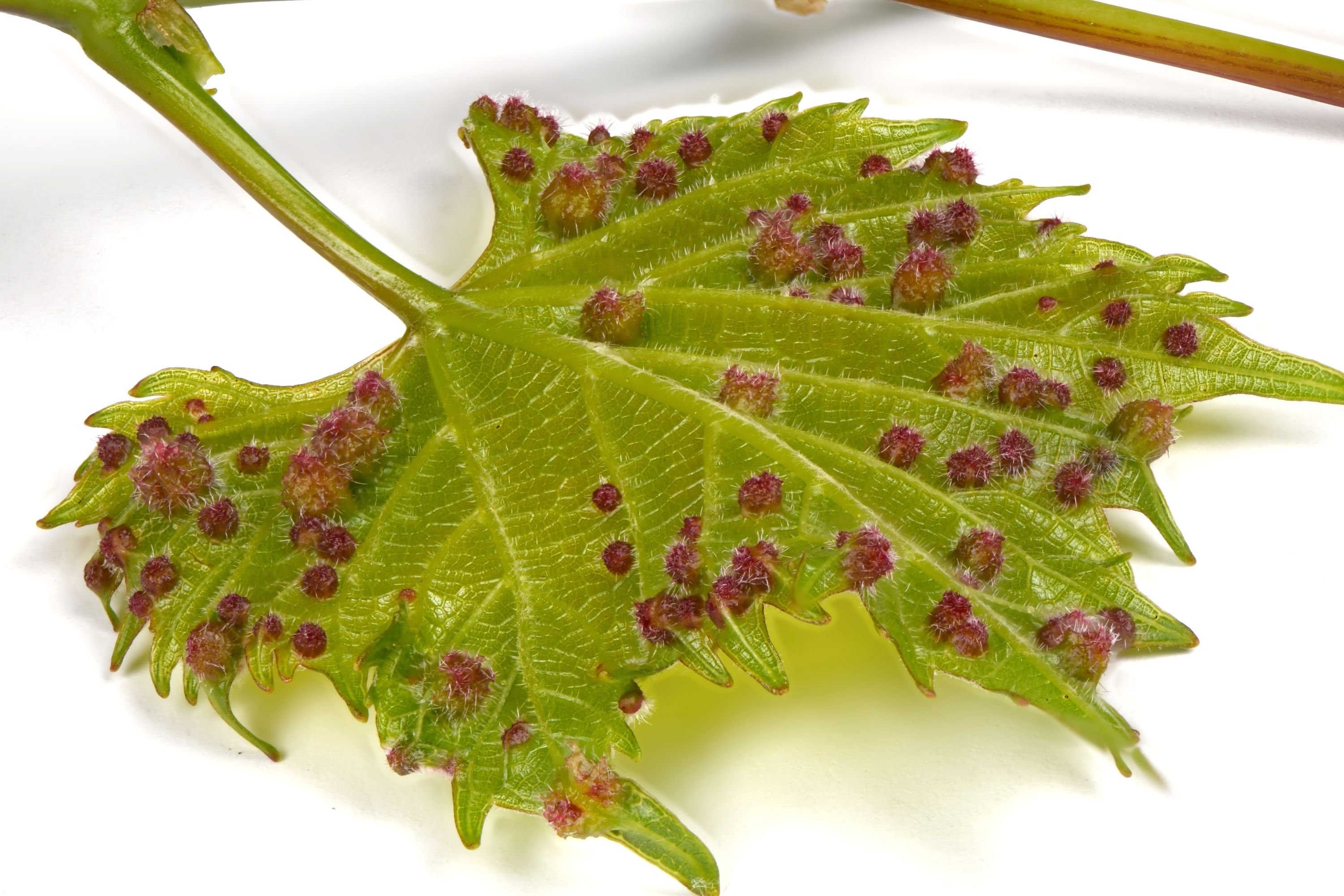Grape phylloxera
(Daktulosphaira vitifoliae)

Description
Grape phylloxera is an insect pest of commercial grapevines worldwide, originally native to eastern North America. Grape phylloxera (Daktulosphaira vitifoliae (Fitch 1855) belong to the family Phylloxeridae, within the order Hemiptera, bugs); originally described in France as Phylloxera vastatrix; equated to the previously described Daktulosphaera vitifoliae, Phylloxera vitifoliae. These almost microscopic, pale yellow sap-sucking insects, related to aphids, feed on the roots and leaves of grapevines (depending on the phylloxera genetic strain). On Vitis vinifera, the resulting deformations on roots ("nodosities" and "tuberosities") and secondary fungal infections can girdle roots, gradually cutting off the flow of nutrients and water to the vine. Nymphs also form protective galls on the undersides of grapevine leaves of some Vitis species and overwinter under the bark or on the vine roots; these leaf galls are typically only found on the leaves of American vines. American vine species (such as Vitis labrusca) have evolved to have several natural defenses against phylloxera. The roots of the American vines exude a sticky sap that repels the nymph form by clogging its mouth when it tries to feed from the vine. If the nymph is successful in creating a feeding wound on the root, American vines respond by forming a protective layer of tissue to cover the wound and protect it from secondary bacterial or fungal infections. Currently there is no cure for phylloxera and unlike other grape diseases such as powdery or downy mildew, there is no chemical control or response. The only successful means of controlling phylloxera has been the grafting of phylloxera-resistant American rootstock (usually hybrid varieties created from the Vitis berlandieri, Vitis riparia and Vitis rupestris species) to more susceptible European vinifera vines. Phylloxera has a complex life-cycle of up to 18 stages, that can be divided into four principal forms: sexual form, leaf form, root form, and winged form. The sexual form begins with male and female eggs laid on the underside of young grape leaves. The male and female at this stage lack a digestive system, and once hatched, they mate and then die. Before the female dies, she lays one winter egg in the bark of the vine's trunk. This egg develops into the leaf form.
Taxonomic tree:







